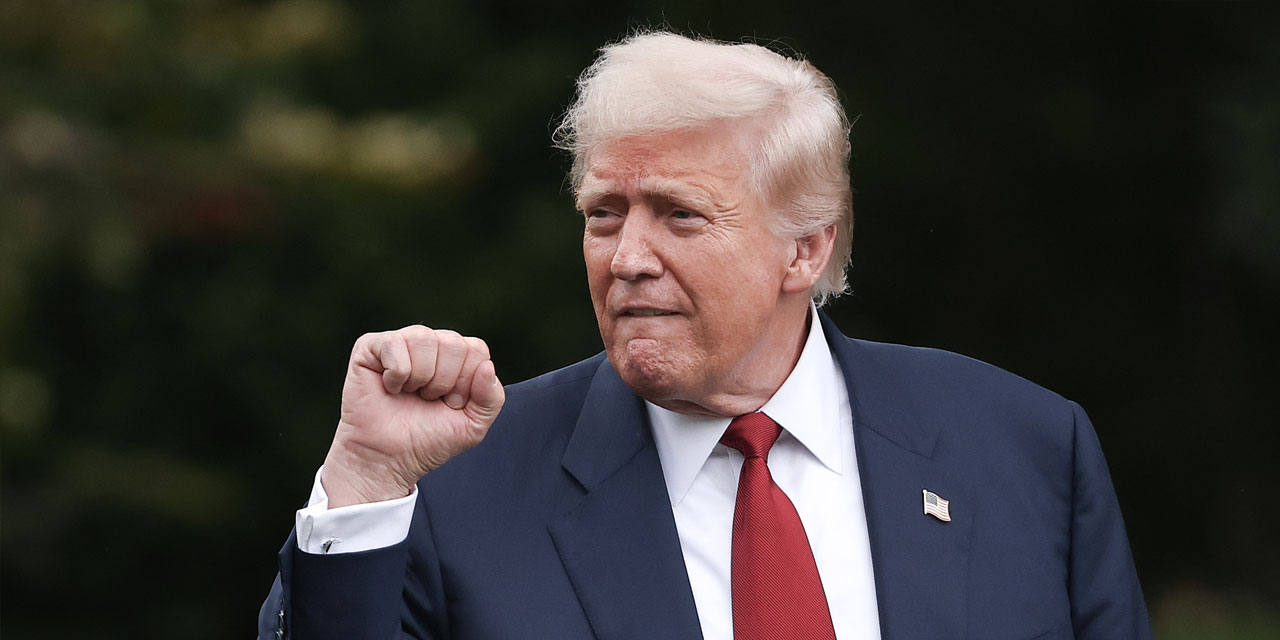
In a memorandum to Secretary of Education Linda McMahon last Thursday, President Donald Trump announced that for the first time, universities receiving federal financial assistance will be required to report data on applicants, admits, and enrollees by race to the National Center for Education Statistics (NCES).
The memorandum, entitled “Ensuring Transparency in Higher Education Admissions,” is the Trump administration’s latest and most comprehensive effort to enforce Students for Fair Admissions v. Harvard, a 2023 Supreme Court decision that banned the use of racial preferences in university admissions. These data are expected to include students’ GPAs and standardized test scores, which will be pivotal to assess compliance with the ruling. Going forward, both the government and American families will be able to point to these data to show evidence of potential discrimination.
Finally, a reason to check your email.
Sign up for our free newsletter today.
“It should not take years of legal proceedings, and millions of dollars in litigation fees, to elicit data from tax-payer funded institutions that identifies whether they are discriminating against hardworking American applicants,” said McMahon in a press release. “We will not allow institutions to blight the dreams of students by presuming that their skin color matters more than their hard work and accomplishments.”
Over the last two years, universities have gone above and beyond to evade the Court’s ruling. They’ve added racially coded essay prompts to their applications, eliminated standardized testing requirements, and incorporated racial proxies, such as whether a student comes from a single-parent household, as considerations in the admissions process.
Some institutions have been strikingly bold in their defiance. Take, for example, Johns Hopkins University, which in the 2023-2024 admissions cycle asked applicants to “tell us about an aspect of your identity (e.g. race, gender, sexuality, religion, community, etc.) or a life experience that has shaped you as an individual and how that influenced what you’d like to pursue in college at Hopkins.”
Why did America’s elite universities believe that they could discriminate against white and Asian students with impunity, even in the face of a Supreme Court decision to the contrary? The answer is twofold.
First, universities correctly inferred that the Biden-Harris administration, which was in office when Fair Admissions was handed down, would ignore it. Former President Joe Biden, responding to the ruling, urged universities to give “serious consideration to the adversities that students have overcome,” such as “personal experiences of hardship or discrimination, including racial discrimination.” Kamala Harris, for her part, described Fair Admissions as “a step backward for our nation.”
Second, universities grew used to the idea, largely popularized by the courts, that they were owed complete deference in the selection of their student bodies. Their sense of entitlement can be traced back to 1978’s Regents of the University of California v. Bakke, the first case in which the Supreme Court examined the constitutionality of a university’s affirmative action program. Here, Justice Lewis Powell, in a plurality opinion, noted that, because “it is the business of a university to provide that atmosphere which is most conducive to speculation, experiment, and creation,” institutions of higher education are entitled to certain freedoms, one of which is the freedom to decide “who may be admitted to study.” Inherent in this freedom, he argued, was the option of considering race as “one factor among many” in the admissions process, since “speculation, experiment, and creation” are “widely believed to be promoted by a diverse student body.”
Twenty-five years later, Justice Sandra Day O’Connor endorsed Powell’s view in her majority opinion in Grutter v. Bollinger. In that case, the Supreme Court considered a challenge to the University of Michigan Law School’s admissions policy, which treated the race of underrepresented minority applicants as a “plus factor.” Five justices voted to uphold the controversial policy, crediting judicial deference as the reason for their decision: “Our conclusion that the law school has a compelling interest in a diverse student body is informed by our view that attaining a diverse student body is at the heart of the law school’s proper institutional mission, and that ‘good faith’ on the part of a university is ‘presumed’ absent ‘a showing to the contrary.’”
Of course, there had been a showing to the contrary in Grutter. O’Connor herself cited testimony from the dean of the law school that acknowledged that black and Latino applicants were often admitted with lower GPAs and LSAT scores than their white and Asian peers.
In 2016’s Fisher v. the University of Texas at Austin, the Supreme Court once again ignored evidence of anti-white and anti-Asian prejudice in admissions because it didn’t want to police how universities chose their students. Justice Anthony Kennedy, writing for the majority in Fisher, explained that “a university is in large part defined by those intangible ‘qualities which are incapable of objective measurement but which make for greatness.’” Accordingly, “considerable deference,” he contended, “is owed to a university in defining those intangible characteristics, like student body diversity, that are central to its identity and educational mission.”
Only in Fair Admissions did the Supreme Court refuse to give universities the benefit of the doubt. In a landmark opinion, Chief Justice John Roberts wrote: “The universities’ main response to these criticisms is ‘trust us.’ They assert that universities are owed deference when using race to benefit some applicants but not others. While this Court has recognized a ‘tradition of giving a degree of deference to a university’s academic decisions,’ it has made clear that deference must exist ‘within constitutionally prescribed limits.’” Discriminating against Asian applicants for the grave sin of being Asian is, apparently, outside those limits.
And now President Trump and his Domestic Policy Council are holding universities accountable. One day after returning to office, Trump signed an executive order that directed the Departments of Justice and Education jointly to enforce Fair Admissions, including the decision’s ban on racial proxies. Just last month, the administration told Columbia and Brown that their federal funding would be restored only after they agreed to disclose data, disaggregated by race, on applicants, admits, and enrollees. These agreements seemingly served as the blueprint for Trump’s August 7 memorandum.
This work builds on Trump’s efforts in the last term. In 2018, for instance, the Department of Justice investigated a complaint, filed during the second Obama administration by a coalition of 130 Asian American groups, that accused Yale of penalizing Asian students in undergraduate admissions. Among other things, DOJ found that the acceptance rate for black applicants in the top academic decile was 60 percent; for Asian applicants, it was 14 percent. The administration subsequently filed a lawsuit against the Ivy—which Biden rescinded two weeks after entering office.
In September 2024, I wrote in the Wall Street Journal that “short of a presidential administration willing to hold their feet to the fire,” not much would keep universities from continuing to discriminate on the basis of race. President Trump and his team have proven to be that administration.
Photo by Win McNamee/Getty Images
Source link


















